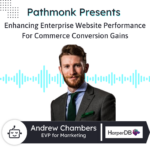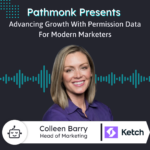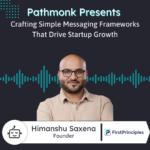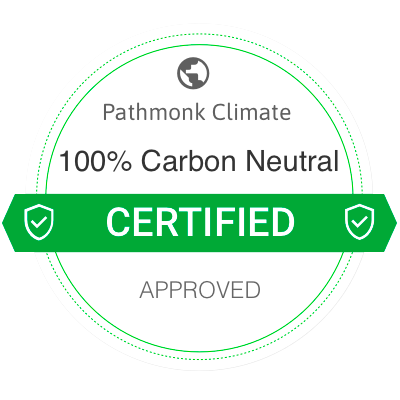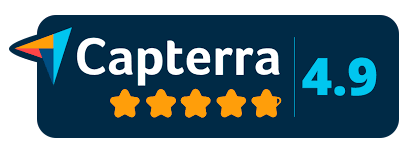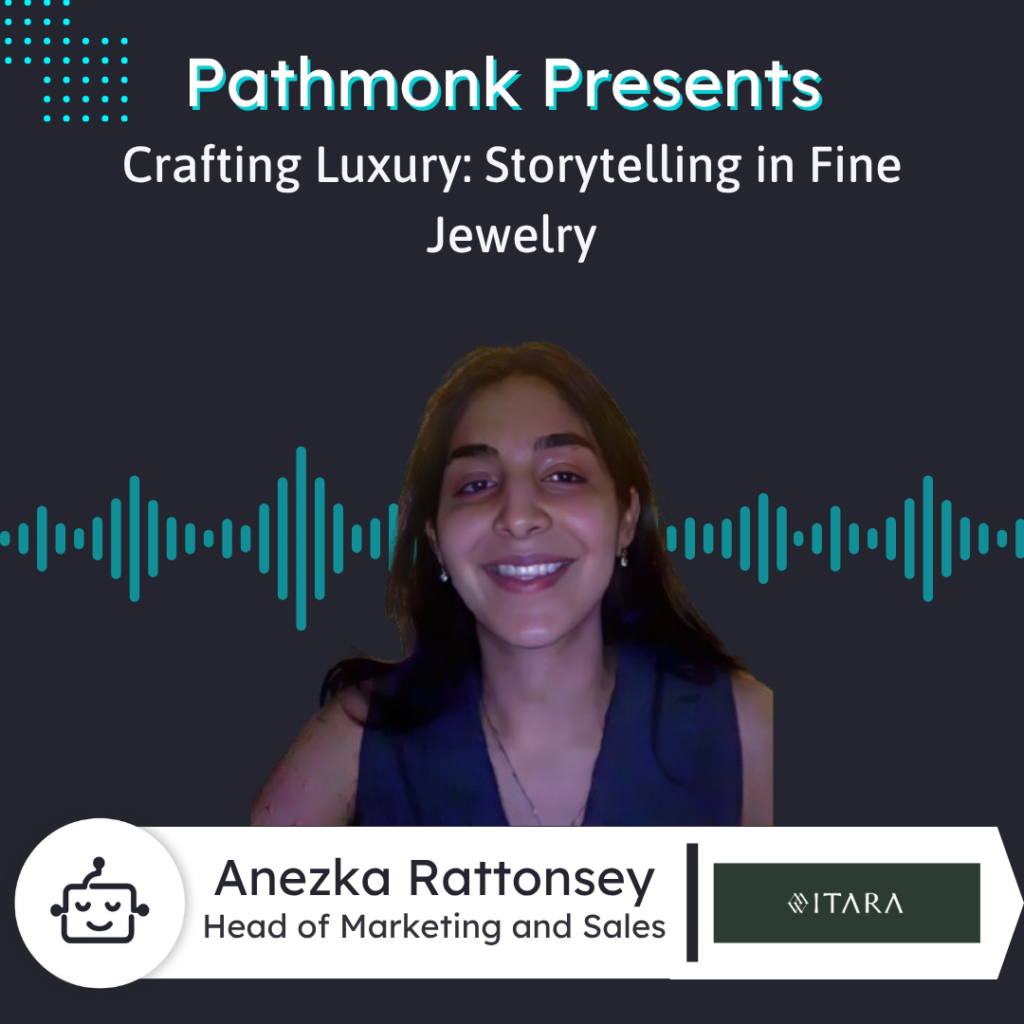
Introduction
Anezka Rattonsey, Head of Sales and Marketing at Itara Jewelry, joins Pathmonk Presents to share how their direct-to-consumer fine jewelry brand blends natural and lab-grown diamonds with exceptional customer service.
Targeting luxury-seeking women, Itara leverages Instagram and WhatsApp for high-intent, personal customer journeys, driving conversions without heavy paid ads.
Anezka discusses the power of intuitive website design, visual storytelling, and social media integration to build trust and community, ensuring repeat customers in India’s competitive fine jewelry market.
Increase +180%
leads
demos
sales
bookings
from your website with AI
Get more conversions from your existing website traffic delivering personalized experiences.
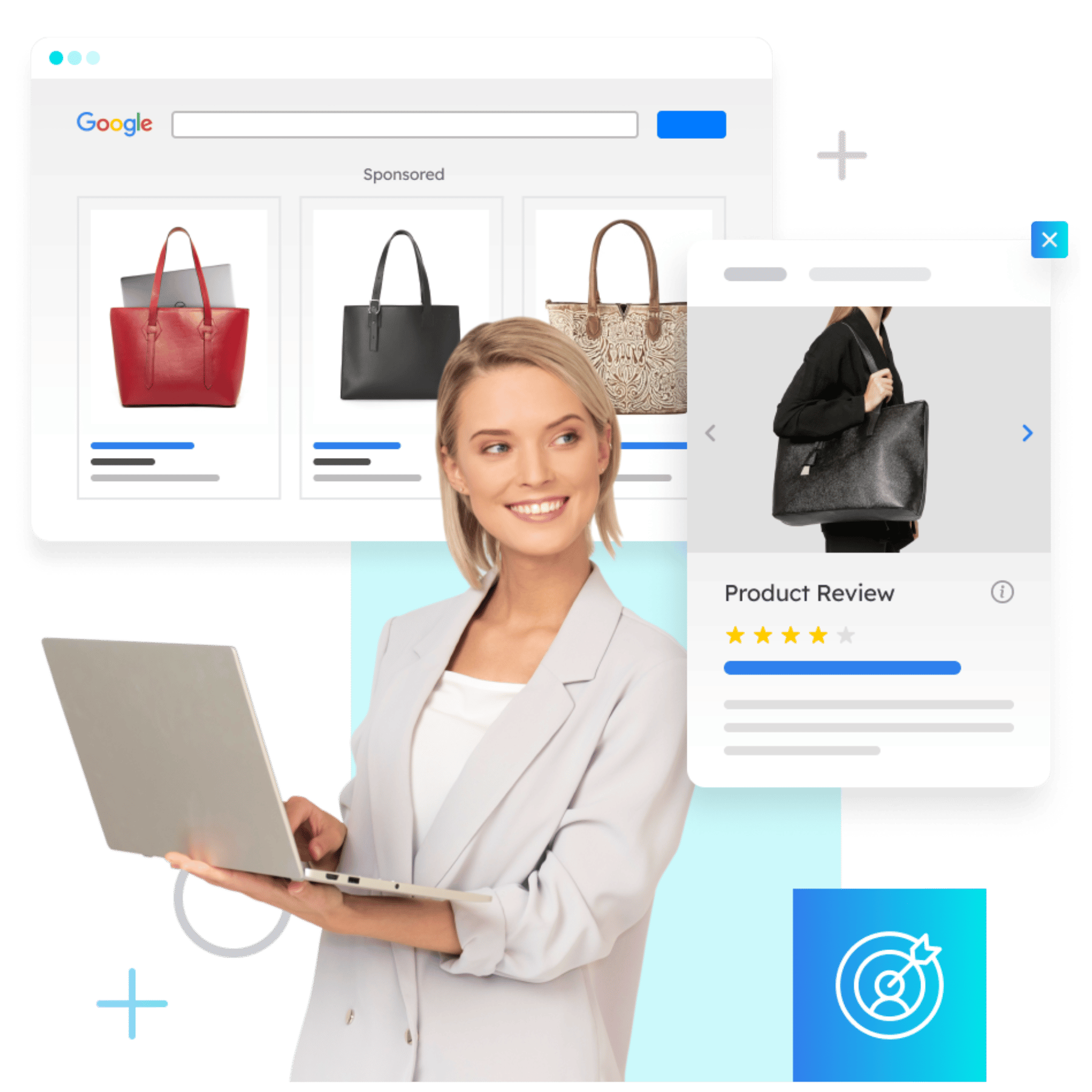
Rick: Pathmonk is the AI for website conversions. With increasing online competition, over 98% of website visitors don’t convert. The ability to successfully show your value proposition and support visitors in the buying journey separates you from the competition online. Pathmonk qualifies and converts leads on your website by figuring out where they are in the buying journey and influencing them in key decision moments with relevant micro-experiences like case studies, intro videos, and much more.
Stay relevant to your visitors and increase conversions by 50% by adding Pathmonk to your website in seconds—letting the AI do all the work while you keep doing marketing as usual. Check us out on Pathmonk.com.
Welcome to today’s episode of Pathmonk Presents. Today we are joined by Anezka. She’s the Head of Sales and Marketing at Itara Jewelry. Anezka, welcome to the show.
Anezka Rattonsey: Thank you very much.
Rick: Of course. We’re happy to have you here, and I’m excited to have this conversation. I want to start with the basics a little bit, Anezka. What’s the big idea behind your company? What’s the big idea behind Itara Jewelry? If you were explaining it to a friend over coffee, how would you describe what you do?
Anezka Rattonsey: It’s pretty basic. We are a modern fine jewelry brand. We’re direct-to-customer and we work with natural diamonds, lab-grown diamonds, and precious metals. Our specialties are in bespoke design. Essentially, our offering is high quality and very well priced. Key aspects for us are integrity, authenticity, and fantastic customer service.
Rick: Those are good ones, and you definitely want that. What kind of customers are the best fit for your product? How does the journey they embark on—when they land on your website or see your brand—impact their shopping experience?
Anezka Rattonsey: Essentially, the audience we serve is in the luxury space. They’re women, generally aged 28 and above, many of them professionals. We’re bridging the gap between fast fashion jewelry and traditional high jewelry—building a space for something modern and easy. Originally, lab-grown diamonds were a novel product, but now that’s become more common. The focus has shifted toward carving your niche within the jewelry space and highlighting the uniqueness of your service.
Rick: Okay, I see what you mean. I’m curious about the niche within the niche, so to speak. Let’s get technical for a second. What’s the most effective customer acquisition channel for you? And maybe touch on how you’ve optimized those channels to drive consistent sales.
Anezka Rattonsey: We’ve done it in a very unique way, and that’s a lot to do with the landscape we’re in. We’re in fine jewelry—within India especially—which is highly personal and a very thought-out purchase. So we deal with low-funnel, high-intent platforms like Instagram and WhatsApp, and we use them as customer experience tools. That’s where we really build relationships and connect, and that’s led to extremely high conversion. We’ve done it without paid performance actually.
Rick: That’s interesting and unusual. Most people we speak to on the podcast rely heavily on paid—whether PPC, TikTok, Meta, and so on.
Anezka Rattonsey: We have done paid and optimized within it, but we’ve just not been aggressive with it because of the nature of the customer journey.
Rick: Understood. So they come in from Instagram, let’s say?
Anezka Rattonsey: Instagram has by far been our highest lead generation and conversion platform. Our website used to function more like a catalog and trust-building factor. We had it custom-coded originally because we thought it’s what we needed to do, given our service model. But over time, we saw consumer behavior shift and moved to Shopify. It allowed us to integrate a lot of marketing tools and easily view the customer journey—especially helpful because we were a lean team. That switch led to more conversions on the site.
It’s also been interesting to see the ticket items being purchased online. All our products are expensive—something you wouldn’t normally see in the Indian market—but now we are seeing that happen. So I can see the value of having a very intuitive, clear offering on your website. It should show the breadth of your service and allow people to check out regular products, but also connect with you—which is very important. Integrating social media and WhatsApp into the experience has been crucial.
Rick: Yeah, it makes it a cohesive journey. Since you’re talking about the connection, I want to stay on that for a moment—the website. How much of a role does it play in pulling in business? Is there anything that’s working particularly well, or anything you’re looking to improve?
Anezka Rattonsey: What’s definitely working is categorization. It’s important to anticipate how your customer is going to shop and reflect that in the site structure. If gifting is a big part of your offering, and price is a major factor in that decision, then you need to make that filter easily available. If not, they’ll quickly veer off the website.
Rick: I can see that. Is there anything—maybe based on your experience at Itara Jewelry—that you think makes an e-commerce website convert well? Do you have any tools, tactics, or little tricks you can share?
Anezka Rattonsey: For us, social media has been a huge driver. There’s a constant back-and-forth between browsing on the website and interacting on social media. And because the journey is so personal, I might not be the right person to speak to high-volume platforms. We operate in a very specific space. I knew I was going to bring a very different perspective because of that.
Rick: Oh yeah, we love it. It’s more of a personal touch you’re offering. So the interplay between the website and social is what makes the difference?
Anezka Rattonsey: Yes, especially because we’re in retail. When you’re in retail, you’re not servicing other businesses. That makes visual storytelling and emotional resonance even more important. More than a CTA or pop-up—it’s about understanding basic human psychology.
Rick: Let’s switch gears. Anezka, let’s talk about you as a leader. Give us a glimpse into your day-to-day. What do you focus on, and how do you structure your time?
Anezka Rattonsey: My role has evolved as the company has grown, and there’s more to do now. My day involves a lot of content creation and strategy, optimizing the website—making sure product descriptions and listings are up to date, and ensuring we have both basic and elevated visuals. I also handle offline clients and orders, PR liaisons, and more.
Rick: So you’re well-versed in content creation. But when it comes to input—there’s a flood of content out there. How do you stay focused and keep learning? Are there places, people, or routines you turn to for inspiration?
Anezka Rattonsey: I definitely look at industry reports—they give a great idea of whether to take an aggressive or conservative approach, especially when analyzing budgets. Our industry has seen a lot of disruption, so that’s something I keep a pulse on. I also follow DTC brands that I admire or that are in similar positions.
That said, it’s difficult to apply different things from different people to your business because every organization is different. Your growth is different, your community is different. So more than seeking out external advice, I listen to what’s directly in front of me. Our customers will always tell us what we need to fix and optimize better than any article online.
Rick: That’s a really good point. It sounds like you’re describing active listening—interpreting customer feedback, even if it’s harsh, and using it to improve your product and sales strategy.
Anezka Rattonsey: Absolutely. Rather than looking outward too much, just go back to your customer and ask, “Was there a glitch here? How can I improve?” That very human approach will teach you a lot more.
Rick: I like it. We’re coming to the end of our time here, so let’s jump into our rapid-fire segment. These are short, concise questions—and you’ve been sharp so far, so I know you’ll do great. Ready?
Anezka Rattonsey: Yeah.
Rick: Let’s do it. Do you prefer watching, reading, or listening?
Anezka Rattonsey: Listening.
Rick: What’s the latest piece of content—a podcast or audiobook—you picked up? Any ideas that stuck?
Anezka Rattonsey: I said listening, but it’s definitely a book: The Creative Act by Rick Rubin. It goes back to what I mentioned earlier—be wary of advice and honor the uniqueness of your own framework.
Rick: That’s a good one. I love Rick Rubin. He’s such a creative genius. Okay—if you had a magic wand and could fix one frustrating thing in your marketing life with tech, what would it be?
Anezka Rattonsey: Emotionally intelligent customer responses that are automated. There’s such a gap there. Email marketing is so far off from connecting with your audience—it’s easily ignored or blocked. I’d definitely improve that.
Rick: So improving the copy and intuitiveness?
Anezka Rattonsey: Yes, like a chatbot that remembers each inquiry’s history, behavior, and liked products—and sends personalized follow-ups with pricing. That would be amazing.
Rick: What’s one repetitive task you’d love to automate forever?
Anezka Rattonsey: Responding to inquiries—especially about price ranges, timelines, restocks.
Rick: Fair enough. If you could go back and give your past self a quick pep talk at the start of your marketing and sales journey, what advice would you give?
Anezka Rattonsey: Go for depth, not breadth. Focus your energy on a few channels that are working for you, and pour more into them instead of trying to do everything at once.
Rick: So being able to prioritize?
Anezka Rattonsey: Definitely. Hone in on what’s really working. Different platforms work for different businesses, so if something is yielding results—don’t ignore it. Go deeper.
Rick: That’s a great piece of wisdom to end with. Anezka, thank you so much for being on the show. Final word: if someone forgets everything from this interview, what’s the one thing they should remember about the work you’re doing?
Anezka Rattonsey: The importance of simplicity, storytelling, and good UX design. These can yield extremely high conversions and repeat customers. Focus on building a community around what you’ve created.
Rick: I like it. If we want to send people your way, what’s the best way to do that? Where should listeners go to find you and your jewelry?
Anezka Rattonsey: Instagram—follow us at @itarajewelry. That’s I-T-A-R-A, jewelry spelled the American way: J-E-W-E-L-R-Y.
Rick: Very good. And your website is the same?
Anezka Rattonsey: Yes, same name.
Rick: But as you said, it starts from Instagram.
Anezka Rattonsey: Yes.
Rick: Fair enough. Again, thank you Anezka for the conversation. We hope to see you again soon—maybe before the year ends. Best of luck with everything, and thank you again for being on the show.
Anezka Rattonsey: Thank you very much. I hope I brought an interesting perspective to your podcast.
Rick: You definitely did. Alright—bye everyone.
Anezka Rattonsey: Bye




